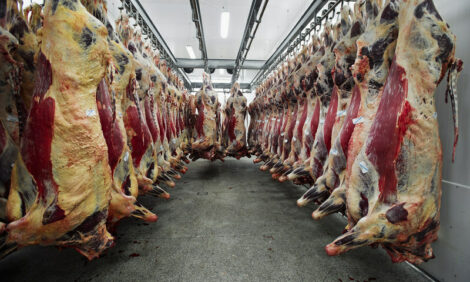



Two new soy processors to open in North Dakota
The new processing plants are set to open in 2023 and 2024North Dakota's soybean industry is at the forefront of what could be a once-in-a-generation transformation in coming years, with two new processing plants set to open in 2023 and 2024 to meet rising domestic biofuel production, reported Reuters.
US soybean crush capacity may swell by as much as 30% over the next four years, with more than a dozen planned new facilities or expansions that are part of a nationwide wave of investment in processing the main US export crop, largely to supply vegetable oil to renewable diesel makers.
The surge would upend traditional trade flows as exports of whole soybeans to markets like China give way to more domestic demand and greater overseas shipments of soymeal, a product that China typically does not import.
Nowhere will this shift be more stark than in North Dakota, the No. 4 US soy state by planted acres, which ships about 70% of its harvest of the high-protein oilseed to China annually. Instead, the new facilities will be able to process half of the state's soy harvest into oil for biofuel and meal for livestock feed.
Although China has imported more US soybeans this year after a smaller-than-expected 2022 South American crop, the world's biggest soy buyer has been relying increasingly on Brazil in recent years for its soybean needs.
Meanwhile, US biofuel makers are seeking more plant oils like soyoil to produce renewable diesel as demand for lower carbon fuels surges.
But soymeal demand growth has lagged, foreshadowing a glut of the feed ingredient unless markets are expanded.
CRUSHING IT
Weather-beaten concrete grain silos tower over the tiny town of Spiritwood, located along BNSF Railway's main line that links North Dakota's farms to export terminals in the US Pacific Northwest.
Here, global crop merchant Archer-Daniels-Midland and Marathon Oil are building a $350 million crush plant where a barley malting plant once stood. The Green Bison Soy Processing LLC facility is slated to open in late 2023.
The crush plant will draw soybeans from farmers 60 miles in each direction, said Mike Keller, vice president with ADM.
It may also prompt growers to plant more of the oilseed instead of crops like wheat and barley, and transform crop marketing plans and grain flows in the state, farmers and analysts said.
Monte Peterson, a farmer in Valley City about 25 miles from Spiritwood, expects to store more soybeans on-farm once the plant opens while timing sales selectively instead of shipping them all at harvest time when prices are normally lower.
"With crush capacity building here, farmers are going to be storing more soybeans to ship 12 months out of the year," said Peterson.
All of the soyoil produced in Spiritwood will be shipped to a Marathon plant in Dickinson 200 miles west to produce renewable diesel, a lower-carbon biofuel that can be used interchangeably with petroleum-based diesel.
The final destination for soymeal is less certain. ADM said this summer that it is initially targeting livestock and poultry producers around the region, and expects exports to ramp up in coming years. US Department of Agriculture trade missions and industry groups have targeted some buyers, but growing markets will take time.
Exporters will look to increase sales to southeast Asia and Europe, and possibly displace shipments from top supplier Argentina in markets such as Australia and New Zealand, said John Baize, president of consultancy John C. Baize & Associates.
EXPORT EXPANSION
US grain exports have been reaching global buyers for decades via Gulf Coast and Pacific Northwest terminals.
But most existing export facilities there were built to move dry whole grain, not processed products like soymeal, which can clog grain handling equipment.
Some Gulf Coast exporters employ smaller mid-river rigs that unload barges directly onto ocean-going ships.
One meal-focused terminal at the Port of Grays Harbor in Aberdeen, Washington, owned by farm cooperative AG Processing Inc (AGP) is working to double its export capacity to 6 million tonnes annually by 2025.
The US Maritime Administration approved a $25.5 million infrastructure grant last month for export terminal expansion. US soybean farmers and industry groups pledged an additional $1.3 million to help offset design and development costs.
"AGP's expansion project at the Port of Grays Harbor is arguably the most immediate opportunity for soybean farmers to assist with the need for increased soybean meal export capacity," said Mike Steenhoek, executive director of the Soy Transportation Coalition.



